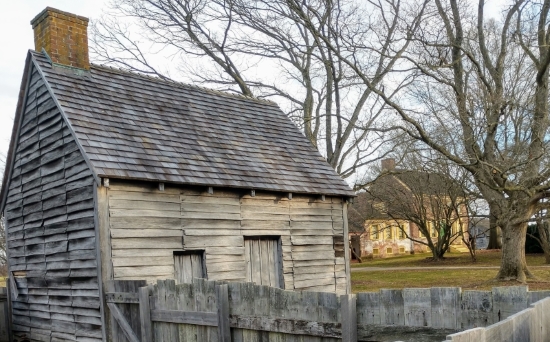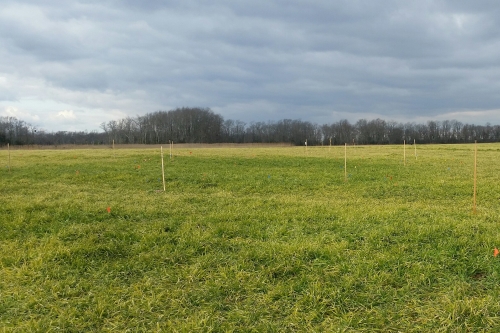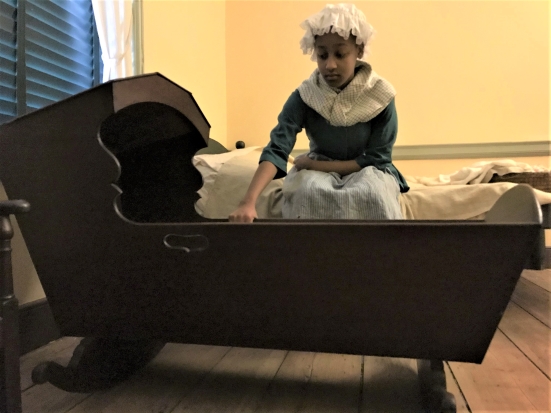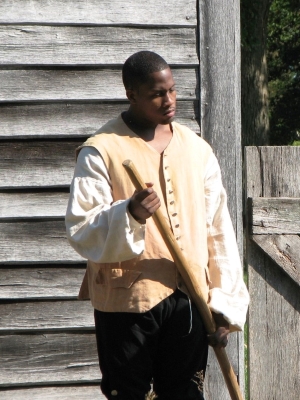Never to be forgotten or lost again
By Gloria Henry, site supervisor, John Dickinson Plantation
On March 9, 2021, a burial ground was found on the property of the John Dickinson Plantation which is believed to be the final resting place for enslaved men, women and children, and free African Americans who died on the site. This sacred ground has been identified after years of dedicated research to discover its location. The Delaware Department of State and the Division of Historical and Cultural Affairs announced the discovery to the public on March 23, 2021.
The division has long known of a burial ground associated with the property. Its location, however, had been lost to time and historical record. One of the research priorities for the site was to identify the location by researching historical documents. We were determined to locate the burial ground and never let the people and families buried there be forgotten again. Their lives and their stories are important, relevant and painful. These uncomfortable narratives need to be told and shared with the public.
There are various plantation records mentioning deaths and a cemetery. One of the most compelling accounts is Violet Brown’s story. Violet was a Black woman enslaved by the Dickinson family. She became a nursemaid to John Dickinson’s children and eventually gained her freedom. We know that she spoke to Sally Dickinson, John Dickinson’s daughter, and Sally wrote down Violet’s recollections. Violet described the death of her father, Pompey, and the funeral procession that passed by the mansion on the way to the burial ground. This suggested that the burial ground for the enslaved individuals was in close proximity to the house.
The burial ground is located half a mile from the mansion in a farm field and measures 160 feet by 170 feet. The mansion house is within view of the graves which were discovered by the Dovetail Cultural Resource Group and South River Heritage Consulting, LLC. The search for the burial ground was conducted using historical research, ground penetrating radar, metal detecting and shovel testing. The archaeologists dug trenches and exposed the tops of grave shafts. No human remains were disturbed during this process. The trenches were refilled after documenting and protecting the grave shafts.
Located at 340 Kitts Hummock Road south of Dover, Del., the John Dickinson Plantation is the boyhood home of John Dickinson, known as the “Penman of the Revolution” and a framer and signer of the U.S. Constitution. Dickinson wrote about freedom and liberty for all while continuing to hold human beings in bondage. His plantation was home to a variety of people who lived there both voluntarily and by force.
As interpreters and historians at the site, we share the stories of the Dickinsons; the tenant farmers; the trades people; the indentured servants; the free and enslaved people; and the families who lived, labored and died on the land. “Five Stories,” an exhibit that explores the lives of several of these people is currently on display in the plantation’s visitor center.

Delaware’s first National Historic Landmark and a component of the First State National Historical Park, the John Dickinson Plantation is a member of both the National Park Service’s National Underground Railroad Network to Freedom and the International Coalition of Sites of Conscience. In addition to “Five Stories,” the visitor center features an exhibit on three documented freedom seekers who escaped from slavery in the 18th century.
The Dickinson family were farmers, merchants and slaveholders. In 1760, John Dickinson inherited the plantation and the many individuals and families his father had enslaved. By 1767, John Dickinson leased the mansion; the grounds; his other nearby properties; and the enslaved Black men, women and children to tenant farmers in exchange for money, crops, products and animals. The enslaved people were a skilled workforce that consisted of tailors, farmers, shoemakers, tanners and carpenters. The enslaved individuals, indentured servants and free Black people provided labor for the plantation and created wealth for the Dickinson family.
In 1777, John Dickinson enacted a conditional manumission (or freeing) of several African Americans that he held in bondage. He wrote they would be free in 21 years. In 1781, he unconditionally manumitted six men, women and children. There was no reason given on why these particular six people were freed. In 1786, he signed an unconditional manumission that released all the enslaved individuals that he owned from bondage. Dickinson listed, by name, the men, women and children he manumitted. The original document is in the Delaware Public Archives.
After the manumission, some of the free Black people were employed by the Dickinsons, some of the children were indentured to John Dickinson and some of the elderly lived on the property. The plantation remained in the Dickinson family until the early 20th century and opened to the public as a museum in May 1956. The portion of the property with the burial ground was purchased by the State in the early 2000s.
In 2020, the division published a race and equity statement in which we declared that we would listen to the public and be a safe place for difficult conversations and uncomfortable truths. We want all voices to be heard and promise to preserve and share Delaware history for current and future generations. To keep our promise, we need help from the community. We established an advisory committee for the John Dickinson Plantation which will assist with future improvements to site interpretation, inclusive history research, educational and public programming, and capital improvements.
There are many difficult decisions and conversations still to be had regarding the burial ground — What are the plans for the future? Who will make these decisions? How do we balance our need for information while respecting the sanctity of this sacred space?
We do not wish to exploit in death those who had no control over their bodies and lives while alive — How do we interpret the silent voices from the past? How do we share with the public all the stories about the lives of people who were forgotten? How do we help the public and our staff process these uncomfortable truths and painful narratives?
The division cannot, and will not, make these complex and emotional decisions alone. We are asking for the community’s help. We plan to engage the public and descendent communities in future decisions and discussions regarding the burial ground.
As part of our mission to share Delaware’s history, we will be conducting tours that visit the burial ground beginning in September 2021. The experience will include an orientation in the visitor center, a tour of the recreated log’d dwelling and a half-mile walk to the burial ground. Tours will be available two days per week at 11 a.m. and 2 p.m. Due to limited capacity, reservations are recommended. More details will be available soon on the John Dickinson Plantation website and Facebook page. Our goal is to share the stories of the lives of the Black families who lived, labored and died on the plantation. Answers to some of the frequently asked questions about the burial ground are available at this page on the division’s website. To learn more about African American history on the plantation, please listen to the division’s podcast on the subject.

As stewards for the State of Delaware, the Division of Historical and Cultural Affairs pledges to preserve the burial ground, and to remember and honor the men, women and children who rest on this sacred ground. They will never be lost or forgotten again.





